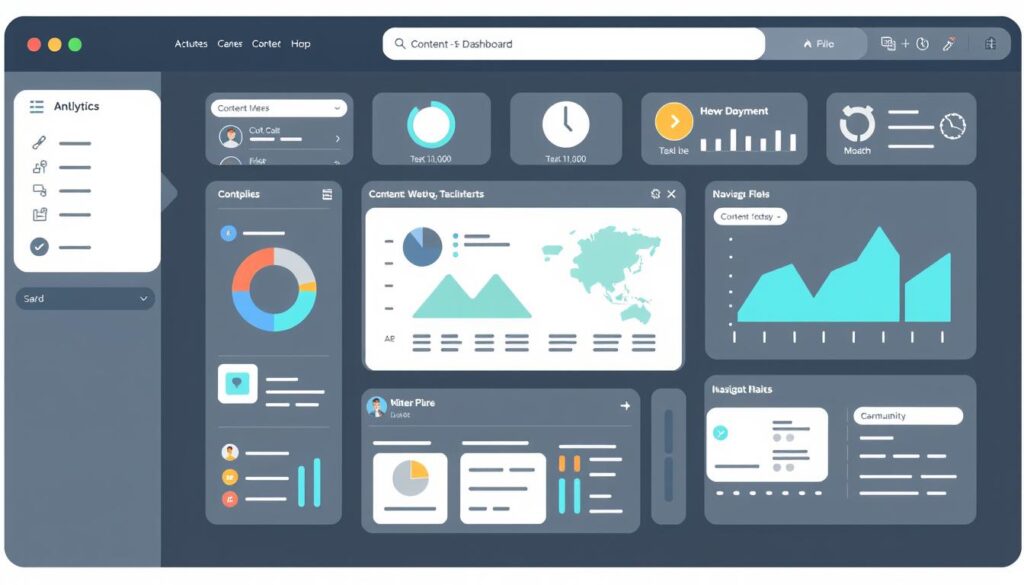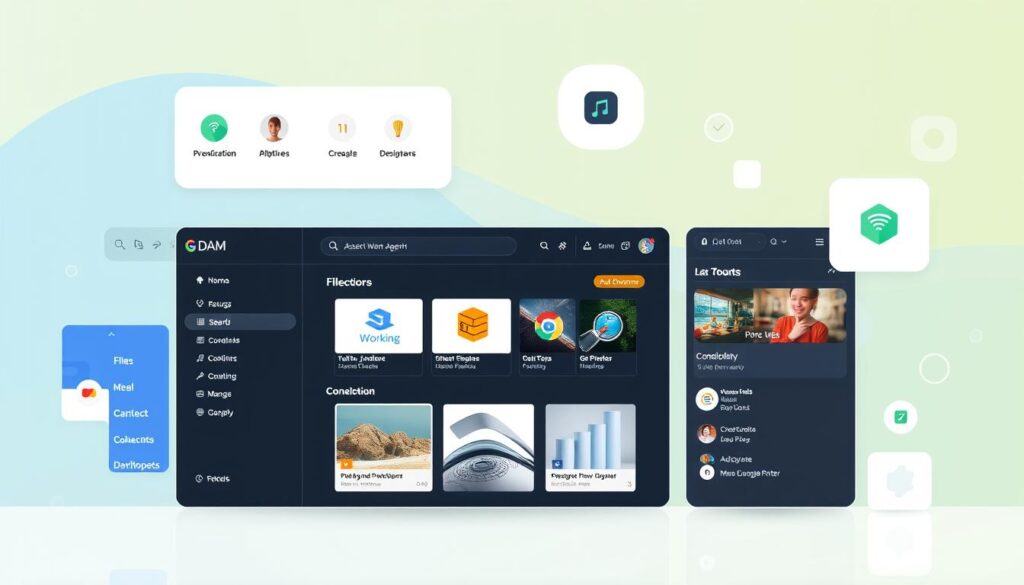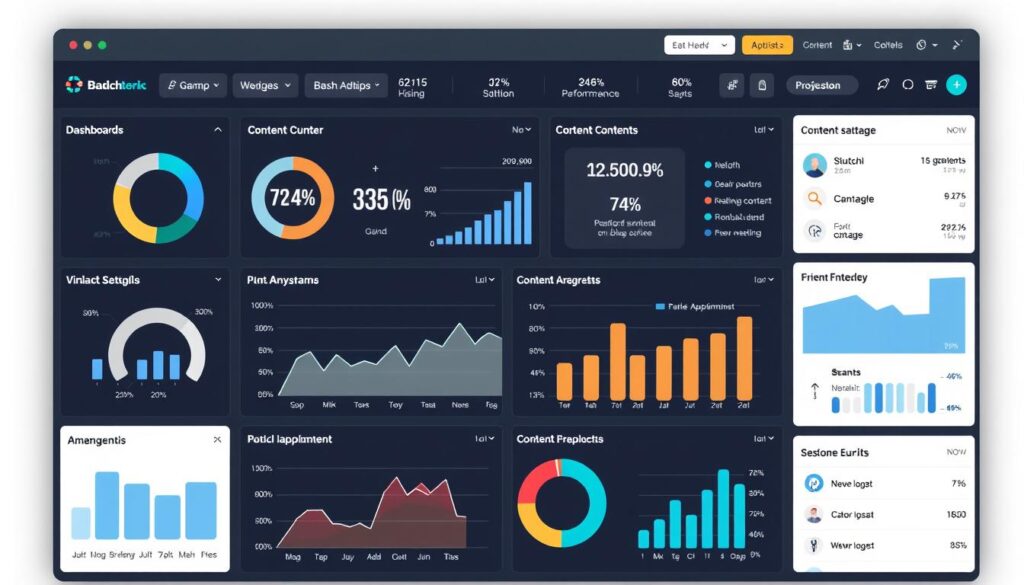Did you know that a significant portion of marketing efforts go to waste due to a “one and done” approach to content creation? This outdated strategy not only wastes resources but also fails to maximize the potential of high-quality content.
By adopting a repurposing strategy, you can breathe new life into your existing content, making it work harder for your SEO efforts. This comprehensive guide will walk you through the process of transforming your valuable content assets into new formats, thereby extending their lifespan and enhancing your online presence.
You’ll discover actionable tips on identifying the right content to repurpose and how to tailor it for different platforms and audiences, ultimately boosting your search engine rankings and saving time and resources.
Understanding Content Repurposing and Its SEO Value
As you navigate the complexities of SEO, content repurposing can be a game-changer. Content repurposing involves taking your existing content and transforming it into new formats to extend its reach, value, and lifespan. This strategy is all about maximizing your marketing efforts, ensuring that your high-quality content gets the most out of it.
What Is Content Repurposing?
Content repurposing is a tactic that allows you to experiment with different content formats, reach new audiences or markets, fill your marketing calendars with minimal extra work, align your brand messaging, and continue to give new life to your best content. By repurposing content, you’re not just reusing what’s already there; you’re creating new opportunities for engagement.
Why Content Repurposing Matters for SEO
From an SEO perspective, repurposing content helps you target different keywords, create more entry points to your website, and build a stronger topical authority in your niche. When done strategically, content repurposing allows you to reinforce key topics across your digital ecosystem, creating a more comprehensive content footprint. This approach is particularly valuable because it enables you to rank for related search terms without duplicating content that could harm your SEO efforts.
| Benefits of Content Repurposing | Description |
|---|---|
| Extended Reach | Repurposing content into new formats helps you reach new audience segments. |
| Increased Value | Transforming content into new formats adds value by providing fresh insights. |
| Improved SEO | Repurposing content helps target different keywords and build topical authority. |

The Benefits of Repurposing Content for SEO
The benefits of repurposing content for SEO are multifaceted and can lead to significant improvements in your online visibility. By repurposing your content, you can maximize its value, expand your reach, boost your search engine rankings, and strengthen your brand consistency.

Maximizing Content Value and ROI
Repurposing content allows you to extract maximum value from your existing content assets without starting from scratch each time. This approach delivers significant ROI, making it a cost-effective strategy for enhancing your content marketing efforts. By transforming your existing content into new formats, you can breathe new life into your marketing strategy.
Expanding Reach to New Audiences
When you repurpose your content, you can reach new audiences who prefer consuming information in different ways, such as visual learners or audio listeners. This helps expand your online presence across various marketing channels, increasing your brand’s overall visibility.
Boosting Search Engine Rankings
From an SEO perspective, repurposed content creates multiple entry points to your website, increasing the chances of capturing organic traffic from various search queries. By publishing multiple pieces of content around a single keyword, you can boost your position in search engine rankings.
Strengthening Brand Consistency
Repurposing content ensures brand consistency across channels while allowing you to tailor your messaging to different audience segments and platforms. This helps establish your brand as an authority on specific topics, which search engines recognize and reward.
As noted by content marketing experts, “Repurposing content is a key strategy for maximizing your content’s impact and reach.” By adopting this approach, you can significantly enhance your SEO efforts and improve your online presence.
How to Identify Content Worth Repurposing
To maximize the value of your content, identifying the right pieces to repurpose is crucial. This involves a strategic approach to selecting content that can be reworked and republished in new formats to reach new audiences or improve engagement.
Auditing Your Existing Content
Begin by conducting a thorough content audit to assess your existing blog posts, articles, and other content assets based on performance metrics and relevance. This step is essential in understanding what content you have and its potential for repurposing.
Analyzing Top-Performing Content
Focus on identifying your top-performing content by analyzing metrics like traffic, engagement, shares, and conversion rates. These pieces have already proven their value to your audience and are prime candidates for repurposing into multiple formats.
Identifying Content Gaps and Opportunities
Look for evergreen content that remains relevant over time, as well as content gaps and opportunities by analyzing search queries that bring visitors to your site but don’t have dedicated content pieces addressing them directly.
| Content Type | Repurposing Potential | Example |
|---|---|---|
| Blog Posts | High | Transform into infographics or videos |
| Articles | Medium | Republish with updated information |
| Social Media Posts | Low | Repurpose into a blog post or email newsletter |
By strategically identifying and repurposing your most valuable content, you can maximize its value, expand your reach, and strengthen your brand consistency.
Building an Effective Content Repurposing Strategy
A successful content repurposing strategy begins with a clear understanding of your goals and audience. To maximize the value of your existing content, you need to formulate a comprehensive plan that aligns with your marketing objectives.
Setting Clear Goals and Objectives
Setting clear goals is the foundation of a successful content repurposing strategy. You need to determine what you want to achieve through repurposing, whether it’s increasing traffic, reaching new audience segments, or maximizing the value of existing content. Clear objectives will guide your content selection and transformation processes.
Understanding Your Target Audience
Understanding your target audience’s preferences for consuming content is crucial for determining which formats will be most effective for repurposing. For instance, visual learners might prefer infographics over text-based content. Tailoring your repurposed content to your audience’s preferences will enhance engagement and conversion rates.
| Audience Preference | Content Format | Distribution Channel |
|---|---|---|
| Visual Learners | Infographics, Videos | Social Media, Blogs |
| Text-Based Learners | Blog Posts, E-books | Websites, Email Newsletters |
| Auditory Learners | Podcasts, Audio Summaries | Podcast Platforms, Social Media |
Creating a Content Repurposing Workflow
Developing a systematic content repurposing workflow is essential for ensuring consistency and efficiency. This workflow should include content selection criteria, transformation processes, and distribution channels. A well-planned workflow will help you maintain brand voice and messaging consistency across different formats.
Consider creating a content repurposing calendar that aligns with your overall marketing strategy. This will ensure a steady flow of repurposed content across channels. Establishing metrics for measuring the success of your repurposed content, such as engagement rates and search rankings, will also be crucial.
7 Powerful Ways to Repurpose Content for SEO
To breathe new life into your existing content, consider repurposing it for different formats and platforms. This approach not only maximizes your content’s value but also helps you reach new audiences and improve your search engine rankings.
Transform Blog Posts into New Formats
High-performing blog posts can be transformed into new formats to target different audience segments or address evolving needs. By updating outdated information, refreshing examples, and restructuring content, you can breathe new life into old posts. For instance, a detailed blog post can be turned into a concise guide or a comprehensive resource that provides additional value to your audience.
Create E-books and White Papers from Existing Content
E-books and white papers are excellent formats for repurposing content, especially when combined with lead generation strategies. By hosting all the content on a specific topic in a single format, you provide a cohesive resource that adds value to your audience. This approach also helps to establish your brand as an authority in the industry.
Convert Text Content into Infographics
Infographics are a visually appealing way to present complex information, making it easier to share across social media platforms. To create effective infographics, distill key points, statistics, and processes into graphic elements. Headers can become sections, and text can be condensed into bullet points or icons, making the content more engaging and shareable.
Develop Email Newsletters from Blog Content
Email newsletters are an effective way to repurpose blog content, providing value to subscribers without requiring them to visit your website. By tailoring the content to your audience’s interests, you can create engaging newsletters that keep your subscribers informed and invested in your brand.
Turn Content into Presentations and Slideshows
Transforming detailed content into presentations and slideshows can help you create resources for webinars, conferences, or platforms like SlideShare. By extracting key points and supporting them with visuals, you can create engaging presentations that recap or illustrate important statistics.
Repurpose Content for Social Media Platforms
Social media platforms offer a wide range of opportunities for repurposing content. By adapting your messaging and format to suit each platform’s unique characteristics, you can transform quotes into Instagram graphics, blog insights into LinkedIn posts, or statistics into Twitter threads. This approach helps to stop scrollers and engage your audience across different platforms.
Transform Written Content into Video and Audio
Repurposing written content into video and audio formats can significantly expand your reach. By creating scripts from blog posts, recording podcast episodes based on articles, or producing tutorial videos from how-to guides, you can cater to different learning preferences and increase your content’s visibility.
When repurposing content, it’s essential to consider the specific platform and audience to ensure that the content is optimized for the format rather than simply duplicated. By doing so, you can maximize your content’s potential and achieve your SEO goals.
- Transform high-performing blog posts into new formats to target different audience segments or address evolving needs.
- Create comprehensive e-books and white papers by combining related content into a cohesive resource.
- Convert text-heavy content into visually appealing infographics to make it more shareable.
- Develop engaging email newsletters by repurposing blog content into digestible segments.
- Turn detailed content into presentations and slideshows to create resources for webinars or conferences.
- Repurpose content for social media platforms by adapting messaging and format to suit each platform’s unique characteristics.
- Transform written content into video and audio formats to cater to different learning preferences.
Essential Tools for Content Repurposing
Streamlining your content repurposing workflow requires the right set of tools and technologies. To effectively repurpose content, you need to leverage a combination of platforms that can help manage, transform, and distribute your content across various channels.
Leveraging the right tools can significantly streamline your content repurposing workflow and help your marketing team work more efficiently. Here are some essential categories of tools that can aid in content repurposing:
Content Management Systems (CMS)
Content Management Systems like WordPress, HubSpot, or Drupal provide centralized repositories for your content, making it easier to access, update, and repurpose existing assets across different formats and channels.

Digital Asset Management (DAM) Tools
Digital Asset Management tools help organize and store visual content, making it simple to find and repurpose images, videos, and graphics for multiple uses across your marketing materials.

Content Marketing Platforms
Content Marketing Platforms offer comprehensive solutions for planning, creating, and distributing repurposed content, with features like editorial calendars, workflow management, and performance analytics.

AI Tools for Content Repurposing
AI tools are increasingly valuable for content repurposing, helping to transform long-form content into social media posts, extract key points for summaries, or generate alternative headlines for different platforms.

The best tools for your company will depend on your specific needs, content volume, team size, and the formats you commonly work with. By integrating these tools into your workflow, you can enhance your content marketing efforts and achieve a more efficient content repurposing process.
Optimizing Repurposed Content for Different Channels
The key to successful content repurposing lies in adapting it to suit various channels and audiences. To maximize the impact of your repurposed content, you need to optimize it for different platforms, taking into account their unique characteristics, audience expectations, and technical requirements.
Tailoring Content for Each Platform
When tailoring content for different platforms, consider the specific style and audience of each channel. For instance, what works on LinkedIn may not necessarily work on Instagram or TikTok. For social media platforms, you should adapt your content to match the preferred format, optimal length, and engagement style of each platform. For example, you can create shorter, visual content for Instagram, professional and detailed posts for LinkedIn, and concise, hashtag-rich posts for Twitter. Utilizing social media effectively requires understanding its nuances.
SEO Best Practices for Repurposed Content
To optimize repurposed content for SEO, implement platform-specific keywords, optimize meta descriptions and titles, and ensure proper formatting for each channel. It’s also crucial to avoid duplicate content issues by substantially reworking content for different channels or using canonical tags when publishing similar content across multiple platforms. Consider the role of various media in content distribution and how media can be leveraged.
| Platform | Content Format | SEO Considerations |
|---|---|---|
| Visual, Short-Form | Use relevant hashtags, Optimize images | |
| Professional, Detailed | Use platform-specific keywords, Optimize meta descriptions | |
| Concise, Hashtag-Rich | Use relevant hashtags, Optimize tweet length |
By tailoring your content to each platform and following SEO best practices, you can maximize the reach and impact of your repurposed content across different channels.
Measuring the Success of Your Repurposed Content
Measuring the success of your repurposed content is key to refining your strategy. To achieve this, you need to track the performance of your content across different platforms and formats.
Key Metrics to Track
To understand how your repurposed content is performing, focus on metrics such as engagement rates, time on page, social shares, conversion rates, and SEO rankings. These metrics will help you identify which formats and channels are delivering the best results for your content.
- Engagement rates: Likes, comments, and shares on social media.
- Time on page: How long people spend reading your content.
- Conversion rates: The number of people who take a desired action.
A/B Testing Repurposed Content
A/B testing is crucial for optimizing your repurposed content. By experimenting with different headlines, visuals, and formats, you can determine what resonates best with your audience. For instance, you might compare the performance of a LinkedIn carousel against a blog post, or a short-form video against a static image on Instagram.
| Content Format | Engagement Rate | Conversion Rate |
|---|---|---|
| Blog Post | 2% | 1.5% |
| LinkedIn Carousel | 4% | 2.5% |
| Short-form Video | 5% | 3% |
Conclusion: Making Content Repurposing a Core Part of Your SEO Strategy
Content repurposing is not just a tactic, but a vital component of a successful SEO and content marketing strategy. By systematically repurposing your best content, you can extend its lifespan, reach more people, and maximize your return on investment. To achieve this, you should audit your high-performing content, understand your audience, and plan strategically. Optimizing your content for different channels and measuring its performance will also help you refine your approach.
By making content repurposing a standard part of your content creation workflow, you’ll be able to maintain a consistent presence across multiple channels, build topical authority, and improve your SEO results. The brands that see the greatest benefits are those that view content repurposing as an integral part of their marketing strategy. By consistently repurposing high-quality content, you’ll build a more robust digital presence that serves both your audience and your search engine rankings.
FAQ
What is content repurposing, and how can it benefit my marketing strategy?
Content repurposing involves reusing and reworking existing blog posts or other content to create new formats, such as infographics, videos, or social media posts, to maximize its value and reach new audiences.
How do I identify which content is worth repurposing?
To identify content worth repurposing, audit your existing content, analyze top-performing pieces, and look for content gaps and opportunities to create new content marketing materials.
What are some effective ways to repurpose content?
You can transform blog posts into new formats, create e-books and white papers, convert text content into infographics, develop email newsletters, turn content into presentations, or repurpose content for social media platforms.
How can I optimize repurposed content for different channels?
To optimize repurposed content, tailor it to each platform, and follow SEO best practices, such as using relevant keywords and meta descriptions, to improve search engine rankings.
What tools can help me with content repurposing?
You can use content management systems (CMS), digital asset management (DAM) tools, content marketing platforms, and AI tools to streamline your content repurposing process and improve efficiency.
How do I measure the success of my repurposed content?
To measure the success of your repurposed content, track key metrics, such as traffic, engagement, and conversions, and use A/B testing to refine your content repurposing strategy.
Can content repurposing help improve my SEO?
Yes, content repurposing can help improve your SEO by increasing the visibility and relevance of your content, driving more traffic to your website, and boosting your search engine rankings.